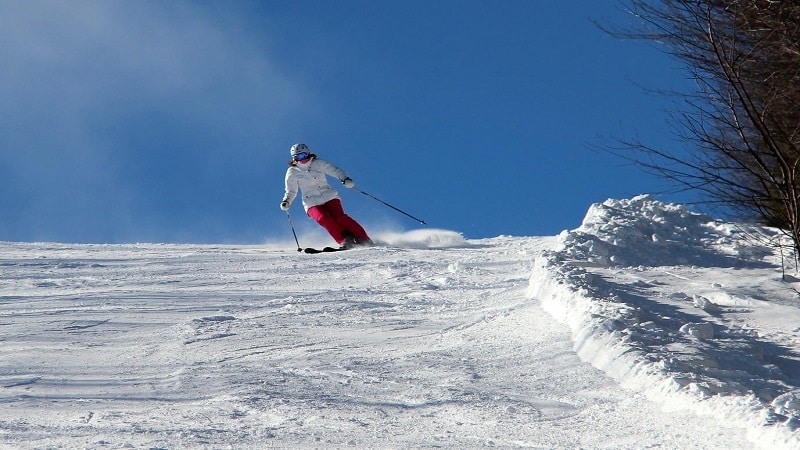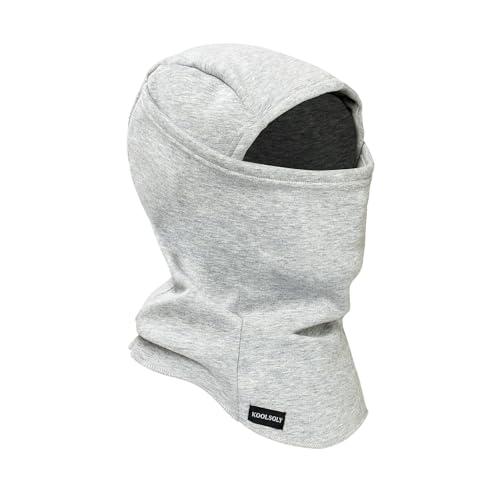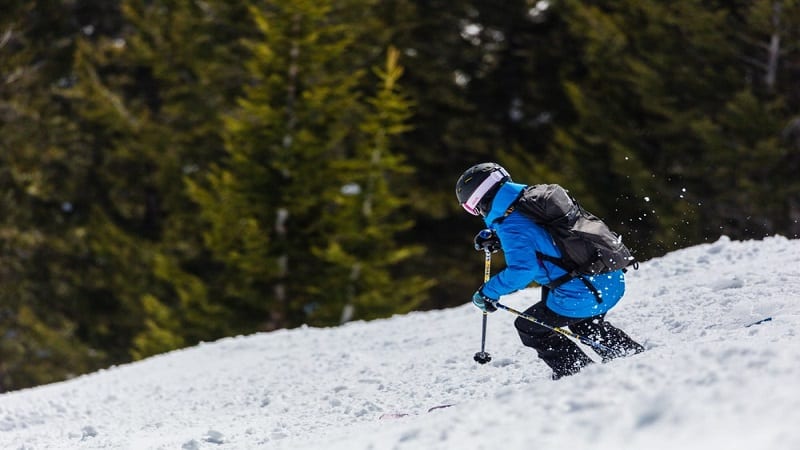Skiing is an intense sport, and it requires a lot of energy and strength. It may appear less taxing than some other sports like football or boxing, but that does not mean you take it lightly. Skiing is a whole-body exercise, and if you want to be prepared, there are quite a few exercises you should do.

When skiing, you are using different muscles in the body for balancing, edging movements, adding pressure, and rotational movements. There is a complex interaction between the upper and lower muscles in the body and your central nervous system. You work the core muscles, the foot and ankle muscles, the lower leg and knee muscles, and the gluteal muscles.
What Muscles Does Skiing Work?
In this article, we’ll take a look at all the muscles used in skiing and the exercises for skiing that you should try and start doing beforehand.
Is Skiing Good Exercise?
If you’re an avid skier or if you’ve tried it once or twice and found it to be exhilarating and refreshing, you may also be wondering whether or not it is good exercise. Well, you’re in luck, because skiing is really good exercise! Not only are you getting to spend time in the fresh, crisp air, but you’re working out various muscles in your body and building up your stamina, endurance, and resistance.
Skiing is also great for your heart and circulation. Skiing downhill has almost the same heart benefits as a cycling or rowing workout. Skiing gives you cardio-metabolic benefits such as improved insulin resistance, body composition, and glucose metabolism. It helps in maintaining healthy blood pressure and a strong, steady heart rate. Skiing also opens up your blood vessels and improves cell health.
There is an exercise method called interval training that skiing is a very good option for. Interval training involves short, high-intensity bursts of activity alternated with periods of rest and recovery in between. So, in the case of skiing, a 15 to 20-minute run followed by an evening of relaxing at the ski resort would be considered interval training. The benefits of this method are that it increases endurance, is great for weight loss, can reduce the risk of injuries, and also provides faster and more efficient workouts. Not to mention, skiing is really fun!
Skiing is also a good exercise because of the way that it focuses on and trains the muscles of your lower body. The mix of balancing, edging movements, adding pressure, and rotational movements must be coordinated and lead to a unique combination of exercise compared to other workouts. Skiing is also a complete lower body workout. Rather than different exercises being combined with working every muscle from the hip down, the act of skiing already involves all the muscles in the lower body. Working out the lower body can improve your balance and your range of motion too.
Lastly, being outdoors for extended periods of time and breathing in the cold, crisp air of the mountains has added health benefits. The air at higher altitudes is cleaner and less polluted than city air, and your lungs can get a nice break from breathing the city air. Being exposed to the cold can also be good for burning off excess fat in the body.
The Main Muscles Used in Skiing
We’ve seen how skiing is great exercise, but now let’s take a look at the muscles used in skiing and how skiing actually works those muscles out.
The Core and Abs
- Historically, skiing required a lot of heavy weight lifting because the skis were much heavier than they are nowadays. Modern skis are light and dynamic, and skiing focuses more on balance and speed than lifting weight.
- Your core muscles help your body maintain its balance. The transverse abdominal muscles, the multifidus, the internal and external obliques, as well as the pelvic floor muscles are all the core and ab muscles being worked while you ski.
- The job of these muscles is to stabilize your spine and your pelvis and to help you maintain the correct posture. By skiing, you are strengthening these muscles and also improving your balance. More expert skiers have better balance, are able to ski with fewer falls, and do not need to spread out their arms to find their balance.
The Gluteal muscles
- The gluteal muscles used in skiing include the gluteus maximus and the gluteus medius. The glutes are the strongest muscles in the human body and work to stabilize the body while the legs are in various positions. The front thigh muscle, the quadriceps, and the hamstrings at the back of the thigh are also important for skiing.
- While skiing, the body is in a flexed position and leaning forward, which puts pressure on the hips and the thighs. This position works out the glutes, quadriceps, and hamstrings.
Knee muscles
- While skiing, your body maintains a sort of extended squatting position, which requires you to bend and straighten your knees. The bending and straightening, also known as flexion and extension, control your body’s pressure and helpin shock absorption as you ski down uneven terrain.
- The muscles in your legs work alongside the muscles in your knees and help by keeping too much pressure off your knees. The knees have a very sensitive ligament called the anterior cruciate ligament, which can snap if too much pressure is applied to your knee.
- Working out the knee muscles and leg muscles helps to evenly distribute the pressure on your body.
The Lower Leg muscles
- The muscles in your lower leg are called the extrinsic muscle group. The muscles are divided into three categories: the anterior compartment located in the shins, the posterior compartment located in the calf, and the lateral compartments.
- These muscles allow you to maintain your body’s balance and properly distribute the pressure being put on your body while skiing.
Foot and ankle muscles
- Your foot and ankle muscles used in skiingwork to help you in rotating your skis and in getting a good range of motion. The feet and ankle muscles involved in skiing are the plantar flexors, which are responsible for pointing your toes, and your dorsiflexors, which are responsible for curling your toes. Curling your toes is very important while skiing because it allows you to keep your shins pressed into the front of your ski boot and gives you better support from the boot.
- The more you ski, the more you work out the muscles in your feet, and the better you will be able to control the rotation of your feet and the precision with which you change directions while skiing.
Arm muscles
- While your arms are not directly involved in skiing, the biceps and the triceps are both being worked out when you push yourself downhill or push off using your ski poles.
Exercises for Skiing
If you’re someone who doesn’t exercise too often, or if you spend most of your time doing things that do not require too much physical exertion, then it may be a good idea to prepare your body for your ski trip. You can do a few exercises beforehand to work some of your muscles and get them used to the kind of exertion that skiing requires.
Some exercises to strengthen your core include side planks, plank holds, hip lifts, and raised knee-in exercises. Check out this video for easy core exercises for beginners that you can do at home. For your glutes and upper leg muscles, squats and lunges can be a good way to start. Lunges and deadlifts can also be helpful in building strength in your hamstrings. For the feet and ankles, walking uphill and doing yoga exercises can be beneficial.
There are also some general exercises you can do with an exercise ball that can help you in improving your body’s balance. These exercises include stability ball deep squat exercises, cable leg curl exercises, and cable hip extension exercises. It may be a good idea to purchase an exercise ball and give these exercises a try at home. A great option for an exercise ball is the URBNFit Exercise Ball for Fitness, Stability, Balance, and Yoga.
How to Reduce Post-Skiing Muscle Pain
If you’re new to skiing, the first few times after a run can leave you feeling tired and with achy muscles. Muscle pain after skiing or any other kind of sport or workout is completely normal and nothing to worry about. The pain is only because the muscles used in skiing are being overworked and exercised much more than they usually would be.
Muscle pain after skiing will usually go away in a few days on its own, but it can be very discomforting and can hinder you from enjoying the rest of your skiing trip. So, we’ve got a few options for things you can do to reduce muscle pain post-skiing.
- Stretch before and after skiing to help your muscles relax. Skiing and over-exerting can cause your muscles to tense up, and they need some help to relax again. Stretching gently can be a great way to do this.
- Drink plenty of water. Water helps you control your body temperature and loosen up your joints. Having enough water will also reduce the chances of getting muscle cramps.
- Head to the sauna or steam room. After being out in the cold and on the snowy slopes, heading to a sauna or steam room can be a relaxing change and help your body warm-up.
- Ice can help reduce inflammation. You can use an ice pack and apply it to your sore or swollen muscles to reduce pain and discomfort. Try out the Medvice Reusable Hot and Cold Ice Packs for Injuries, Joint Pain, Muscle Soreness, and Body Inflammation or the REVIX Knee Gel Ice Wrap with Cold Compression.
- Over-the-counter pain medication such as ibuprofen or some menthol pain relief gel/cream can also be used to help with muscle soreness.
One important thing to keep in mind is that it is okay to continue skiing if you have achy muscles, but it is not okay to ski with painful ones. This is a very important distinction, and there is a difference between tired muscles and injured legs. If you have a lot of pain and continue to ski, you are more likely to get a serious injury. It’s better to be safe than sorry, so if you’re in a lot of pain, it’s better to take time off and rest.
Our Final Thoughts
Skiing is great for your health, both physical and mental. It can be a great break from everyday life and give you a blissful reprieve in a beautiful snowy place. It is also a great way to exercise and take care of your body!
Skiing builds your stamina, improves your balance, helps your heart and blood pressure, and best of all, it works all your muscles. We went through all the muscles used in skiing and how they are worked while you ski. Your core muscles, glutes, upper leg and thigh muscles, knee muscles, lower leg muscles, and foot and ankle muscles are all worked and strengthened. Skiing is a full lower body workout and affects every muscle from your belly button down.
So, if you’re planning on going skiing and aren’t an avid exerciser, it may be time for you to get a leg day in and prepare yourself for the physical exertion of skiing.










